Two things I am talking about here. 1) the Quality of the image sure does make a difference & 2) the narrative makes it rememberable.
I have shared this photo in the past, but not like this one. I continue to do searches trying to find the best copy of this photo.
Caption for the photo above –– ON THE BEACH: On June 15, 1944, during the Pacific Campaign of World War II (1939-45), U.S. Marines stormed the beaches of the strategically significant Japanese island of Saipan, to gain a crucial air base from which the U.S. could launch its new long-range B-29 bombers directly at Japan’s home islands. The first wave of Marines takes cover behind the dunes on Saipan beach, during the World War II invasion of the Marianas Islands. The soldier kneeling in the sand at the far right is Carl Matthews of Texas; second from right is Wendal Nightingale of Skowhegan, Maine; standing is Lt. James Stanley Leary of North Carolina. Neither Nightingale nor Leary made it home from Saipan; both are still listed as missing in action. [Time Life photo by U.S. Marine Sgt. James Burns]
If you have a photo and want to see if it exists in other places on the web you can upload it to TinEye and find all the copies.
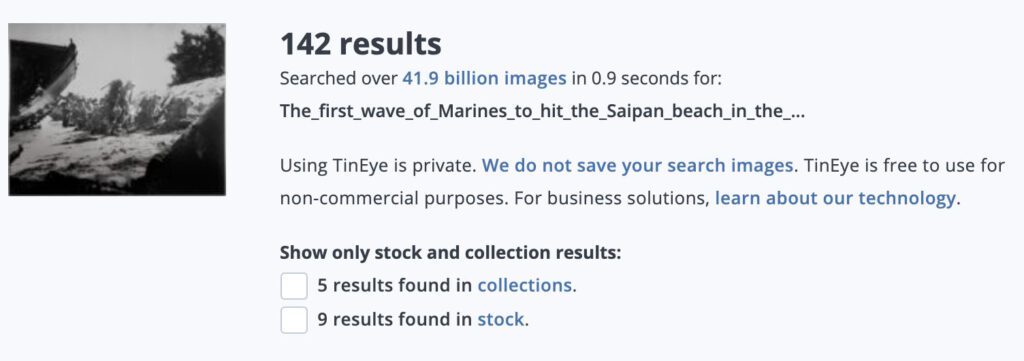
So I uploaded the copy of the photo I had of my Uncle Stanley Leary from WWII and found it was on the web some 142 times.
By the way, we are both named after my grandfather James Stanley Leary. He was always known at Stan Jr.
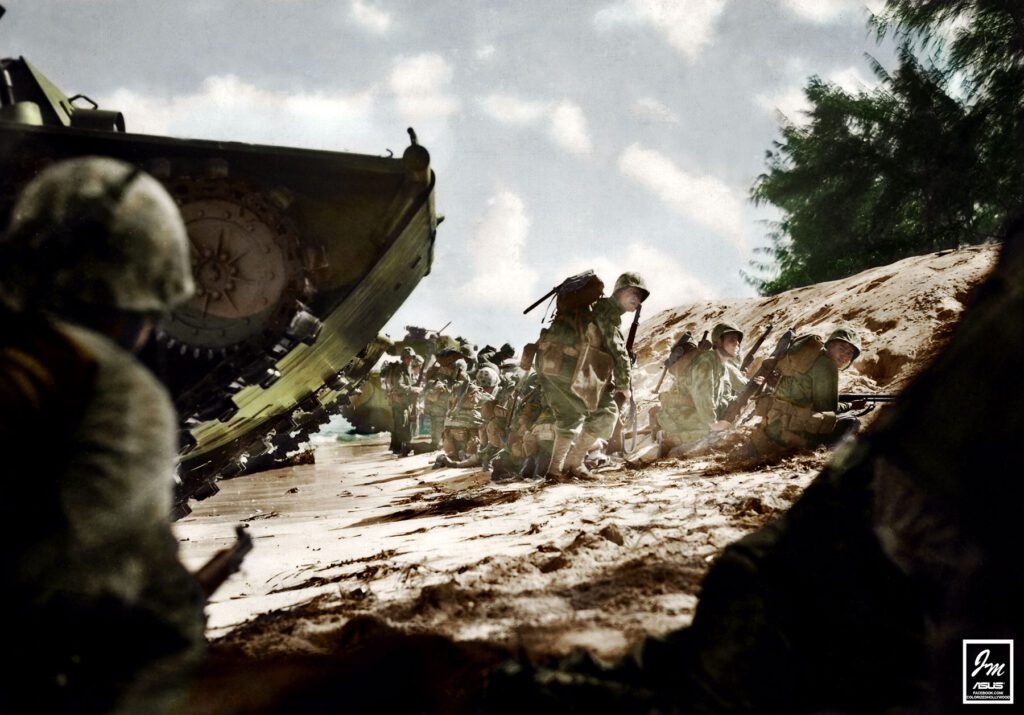
I was surprised to find this one that had been colorized.
I found this one many years ago and what looks like the copy of a print. I can also see the lab guy who printed it was pretty lazy and just exposed for the face and didn’t bring out the detail around the people.
The colorized photo came from this version I also found online.
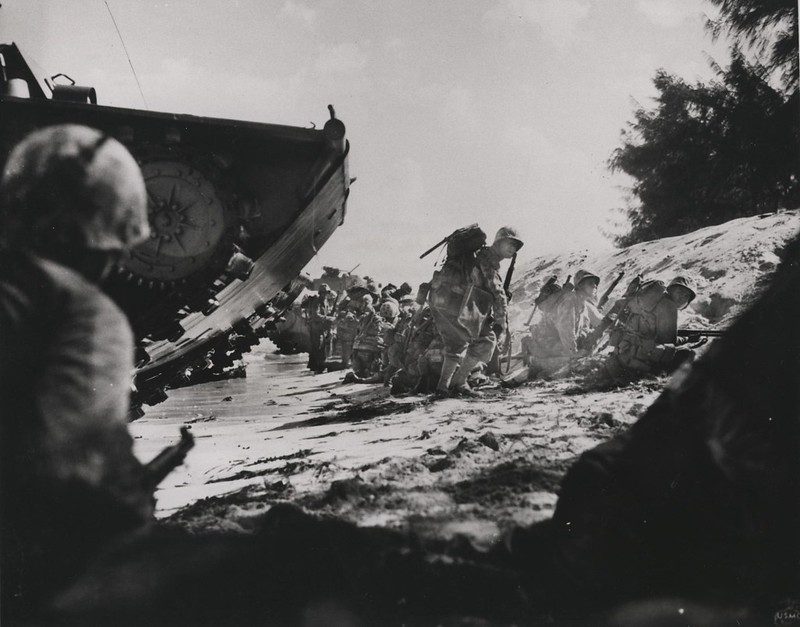
When you zoomed in you could see the faces were not clear and there was a bad dodge done for the print.
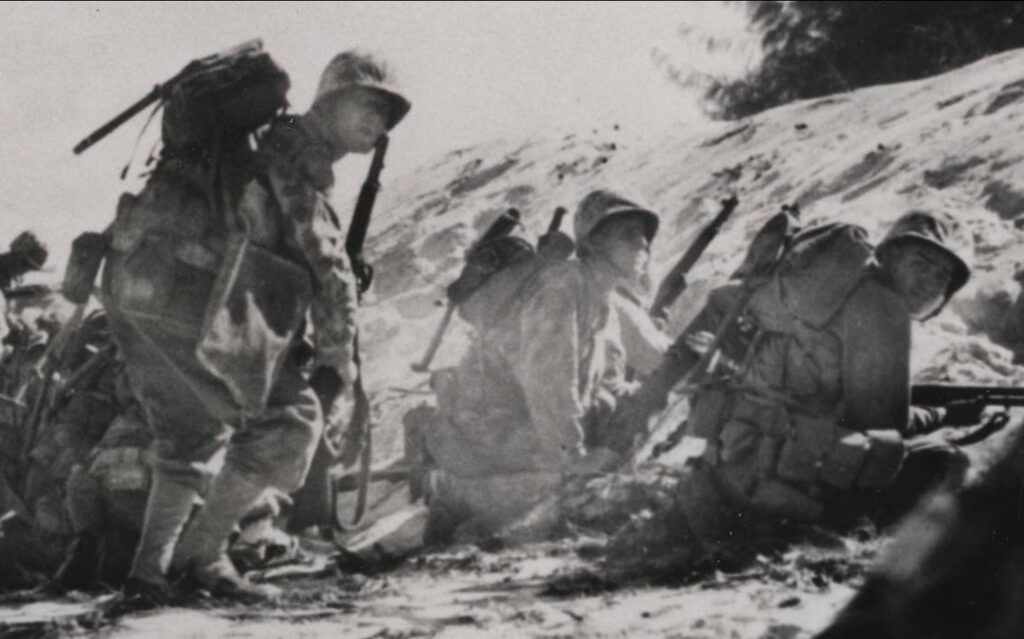
Now I continued to search and finally found a few that were good, but none perfect. So I copied the people in one photo and merged them with another to give me a better overall photo.
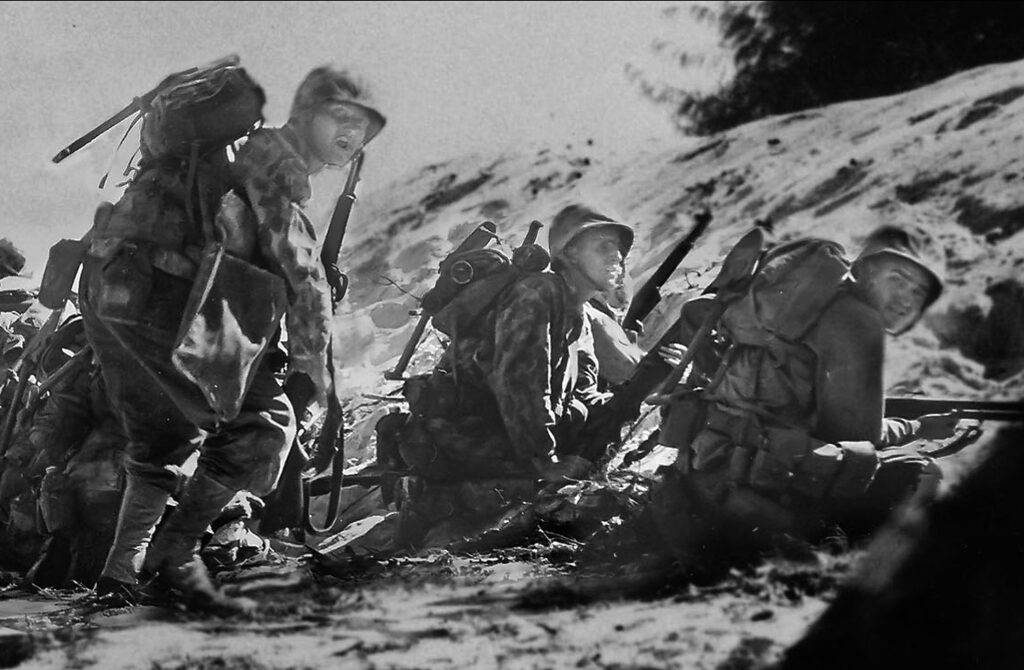
So as you can see in this photo, you can see my uncle’s face.
The problem is I still don’t have a good scan of the original negative to work with, rather me just piecing these photos together to get something I think is the best for now.
My cousin recently was visiting the National Archives when he saw this photo for sale as a poster. I had more information about who was in the photo from my research. Carl Matthews who was in the photo would become close to my grandmother and tell the family the story.
The photo was actually on many of the front pages of the newspapers in the United States. It was for a while at USMC Quantico up on the wall in the foyer.
Why was this photo used over and over through the years and so many others from this time are not shared?
Maybe the rest of the story of Saipan will help you know why it was used so much:
The brutal three-week Battle of Saipan resulted in more than 3,000 U.S. deaths and over 13,000 wounded. For their part, the Japanese lost at least 27,000 soldiers, by some estimates. On July 9, when Americans declared the battle over, thousands of Saipan civilians, terrified by Japanese propaganda that warned they would be killed by U.S. troops, leaped to their deaths from the high cliffs at the island’s northern end.
The loss of Saipan stunned the political establishment in Tokyo, the capital city of Japan. Political leaders came to understand the devastating power of the long-range U.S. bombers. Furthermore, many of Saipan’s citizens were Japanese, and the loss of Saipan marked the first defeat in Japanese territory that had not been added during Japan’s aggressive expansion by invasion in 1941 and 1942. Worse still, General Hideki Tojo (1884-1948), Japan’s militaristic prime minister, had publicly promised that the United States would never take Saipan. He was forced to resign a week after the U.S. conquest of the island.
Every day I am seeing some awesome photos on my social media feed. Beautiful photos of scenery, people, and so on.

When I would have my portfolio of photos reviewed it was amazing how often the editors would flip so fast through my work.
Think about just those people mentioned in the Bible and how few people are actually in the Bible as compared to those who lived during those times. Made-up people in Jesus’ parables cut whereas others who lived didn’t make it.
For photos to live on in the future, either they are truly iconic like Ansel Adams’s photo of Moonrise over Hernandez or they have a narrative.
I think one of the reasons for that photo becoming famous was the story of making it that he told.
Ansel Adams said, “I could not find my Weston exposure meter! The situation was desperate: the low sun was trailing the edge of clouds in the west, and shadow would soon dim the white crosses … I suddenly realized that I knew the luminance of the Moon – 250 cd/ft2. Using the Exposure Formula, I placed this value on Zone VII … Realizing as I released the shutter that I had an unusual photograph that deserved a duplicate negative, I quickly reversed the film holder, but as I pulled the darkslide, the sunlight passed from the white crosses; I was a few seconds too late! The lone negative suddenly became precious.”
“Humans of New York began as a photography project in 2010. The initial goal was to photograph 10,000 New Yorkers on the street, and create an exhaustive catalog of the city’s inhabitants.”
Humans of NY photographer – Brandon Stanton
When he started photographing people on the streets of New York he was first drawn to those who visually stood out. That isn’t what made his photos viral. It was when he sat down with the people he was photographing and just listened to their stories is when Stanton’s epiphany happened. It was the narrative.
“Somewhere along the way, I began to interview my subjects in addition to photographing them. And alongside their portraits, I’d include quotes and short stories from their lives.”
Brandon Stanton
When photos are paired with text and more specifically their story the power of the image has the potential to become one for the ages. Without the narrative – well it is just a cool composition and even might be well done, but it doesn’t move the heart.
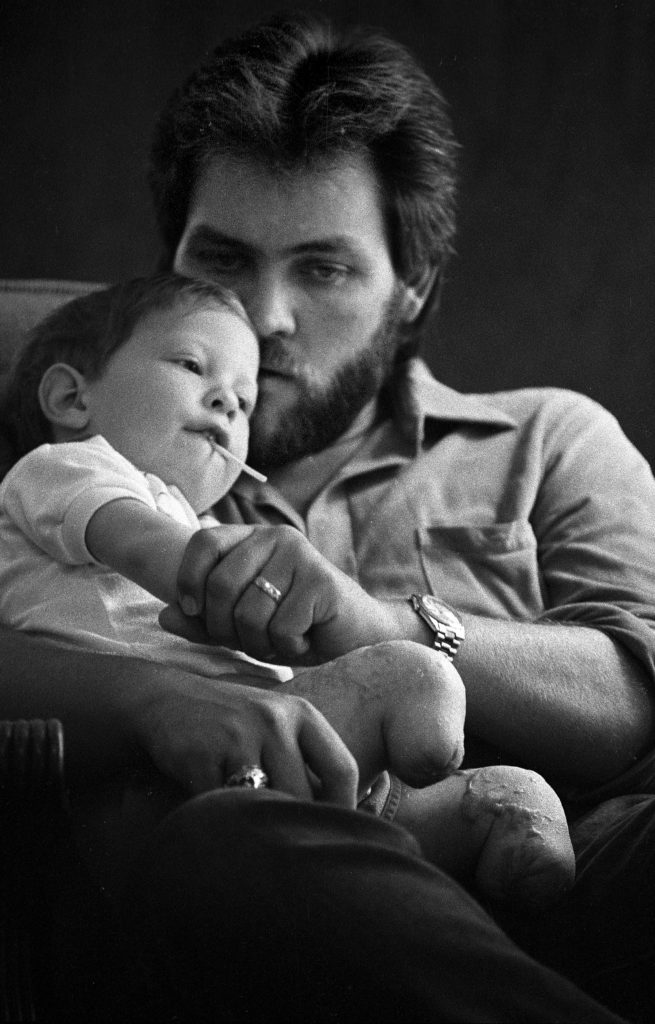
“We can’t dwell on the negative and get discouraged, but you can’t be around Philip very long and maintain that because he changes that. He lifts us up.”
Randy Newberry
The photo is much more powerful than the narrative, don’t you think?



